In the moment you felt the vigor draining from your very being. Shadows took on living form and danced across your field of vision taunting you to react as they evaporated. Your eyes blinked like a neon tube going bad. You cranked up the radio, sang loudly, rolled down the windows regardless of the season or the weather. To no avail. Succumbing to the embrace of Morpheus the Greek god of dreams, you had fallen asleep at the wheel.
In Rest Stop Recovery, Dr. Charles Berg with over 40 years of experience as a chiropractor, practitioner of integrative nutrition and a lifestyle coach for organizations such as BMW and UBS offers helpful pointers and a 5-minute revitalizing routine that will get you safely back on the road and up to speed as a driver and a traveler.
Asleep at the wheel, Rest Stop Recovery
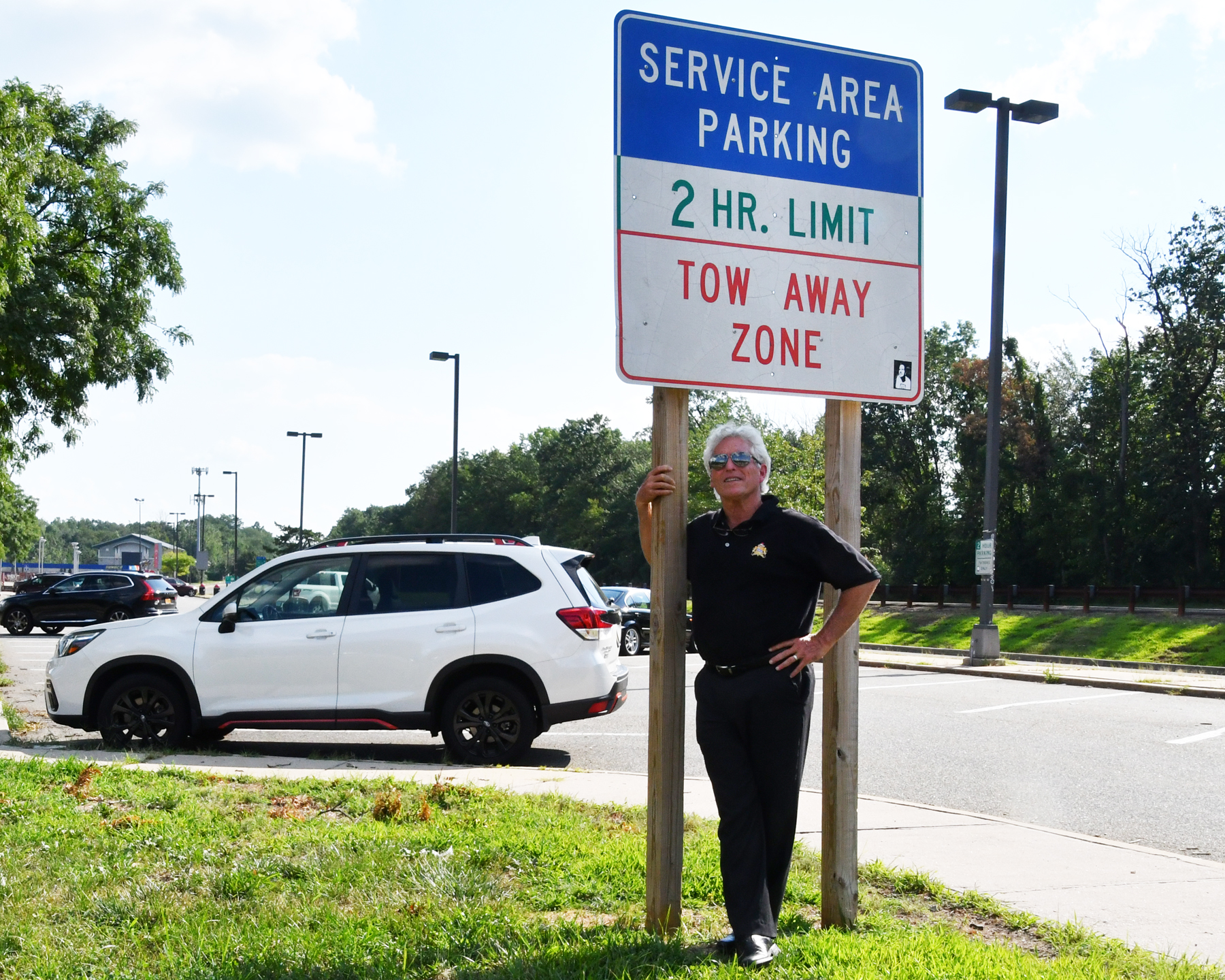
It’s a horrible feeling. Ignoring it can have deadly consequences. Estimates from the American Automobile Association show that one of every six deadly traffic accidents and one of every eight accidents requiring hospitalization are the result of drowsy driving.
Dr. Berg’s focus will be on long drives e.g. a four-hour ride home after a Thanksgiving dinner or a ten-hour ride returning from a vacation.
Rule one when drowsy behind the wheel, pull over. Then the distance to your destination will determine the right course of action so that you get there.
For short term drives within an hour of your destination the traditional solution of pulling over to take a brief 20-minute nap or down two cups of coffee normally provide the reinvigoration necessary to get home safely. It is a whole different story for that long drive home on a monotonous interstate with daylight fading and oncoming headlights twinkling in your eyes.
“In the ideal scenario, it’s a matter of prior planning,” says Dr. Berg. Plan to be rested for the drive. Plan the best time of day to depart. Plan to eat properly before and during the drive.
Get a good sleep the night before. Understand your circadian rhythm. Are you an early bird or a night owl? Plan your travel time accordingly.
Plan so that you do not drive on a full stomach. Like the proverbial pig in the python, your body after a large meal directs blood flow to the digestive system and away from cognition and muscle activity. Pythons having consumed a sizable meal become sedentary and unresponsive. Similar behavior is witnessed in male family members after a holiday meal at your grandmother’s.
Unfortunately, a vast majority of us endure travel schedule’s determined by happenstance, constricted windows of opportunity and evaporating available time that pushes us to the limit. What should someone do facing that situation?
“Biohack,” says Dr. Berg. Think of biohacking as turbocharging your consciousness. Biohacking pumps oxygen into your system and stimulates your senses.
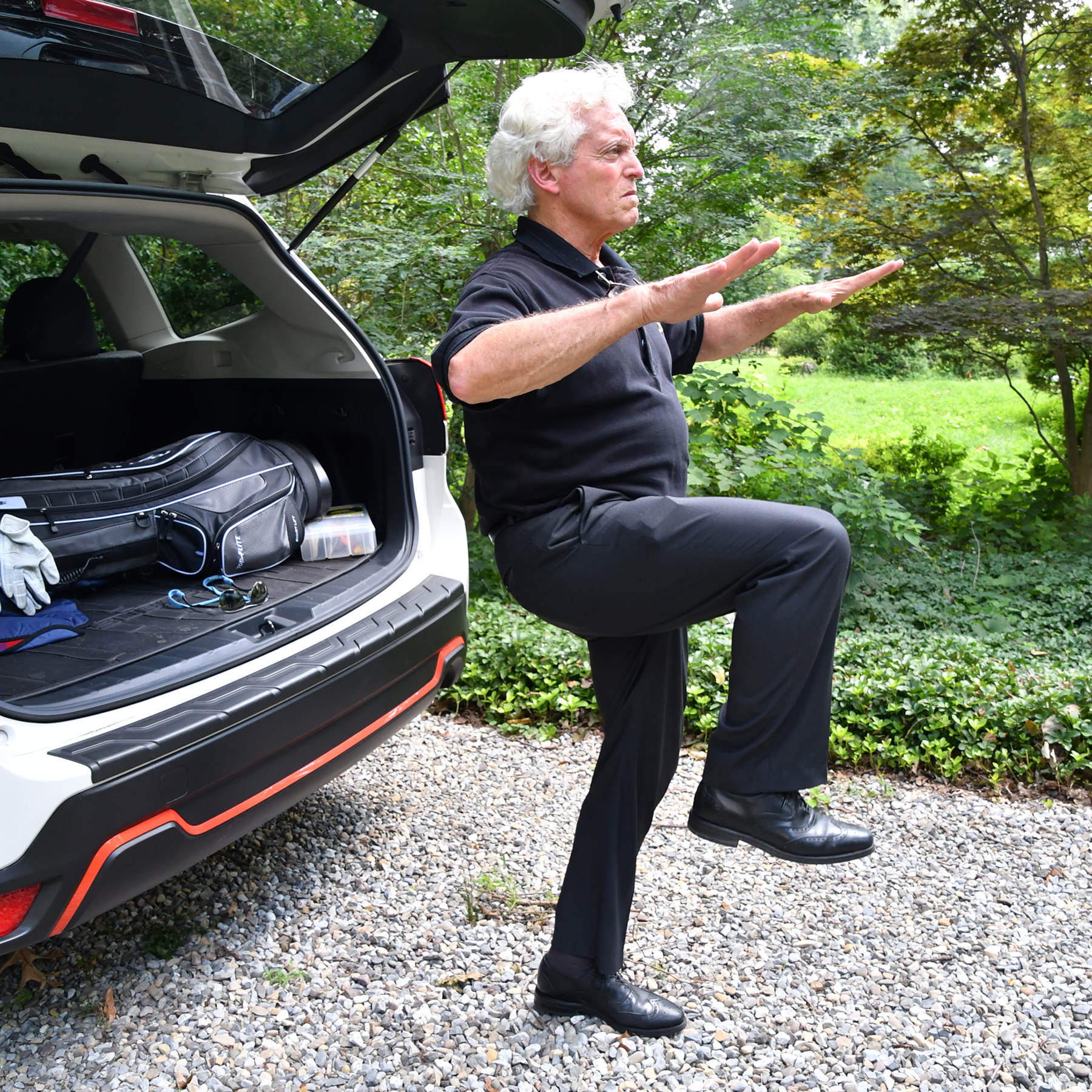
Stair Step
Curing drowsiness demand’s elevating your oxygen supply and increasing your blood flow. An infusion of oxygen elevates your body’s ability to generate energy, just like a turbo. Large muscle movement increases blood flow which utilizes that energy.
“Biohack,” says Dr. Berg. Think of biohacking as turbocharging your consciousness. Biohacking pumps oxygen into your system and stimulates your senses.
Curing drowsiness demand’s elevating your oxygen supply and increasing your blood flow. An infusion of oxygen elevates your body’s ability to generate energy, just like a turbo. Large muscle movement increases blood flow which utilizes that energy.
Biohacks (all require pulling over):
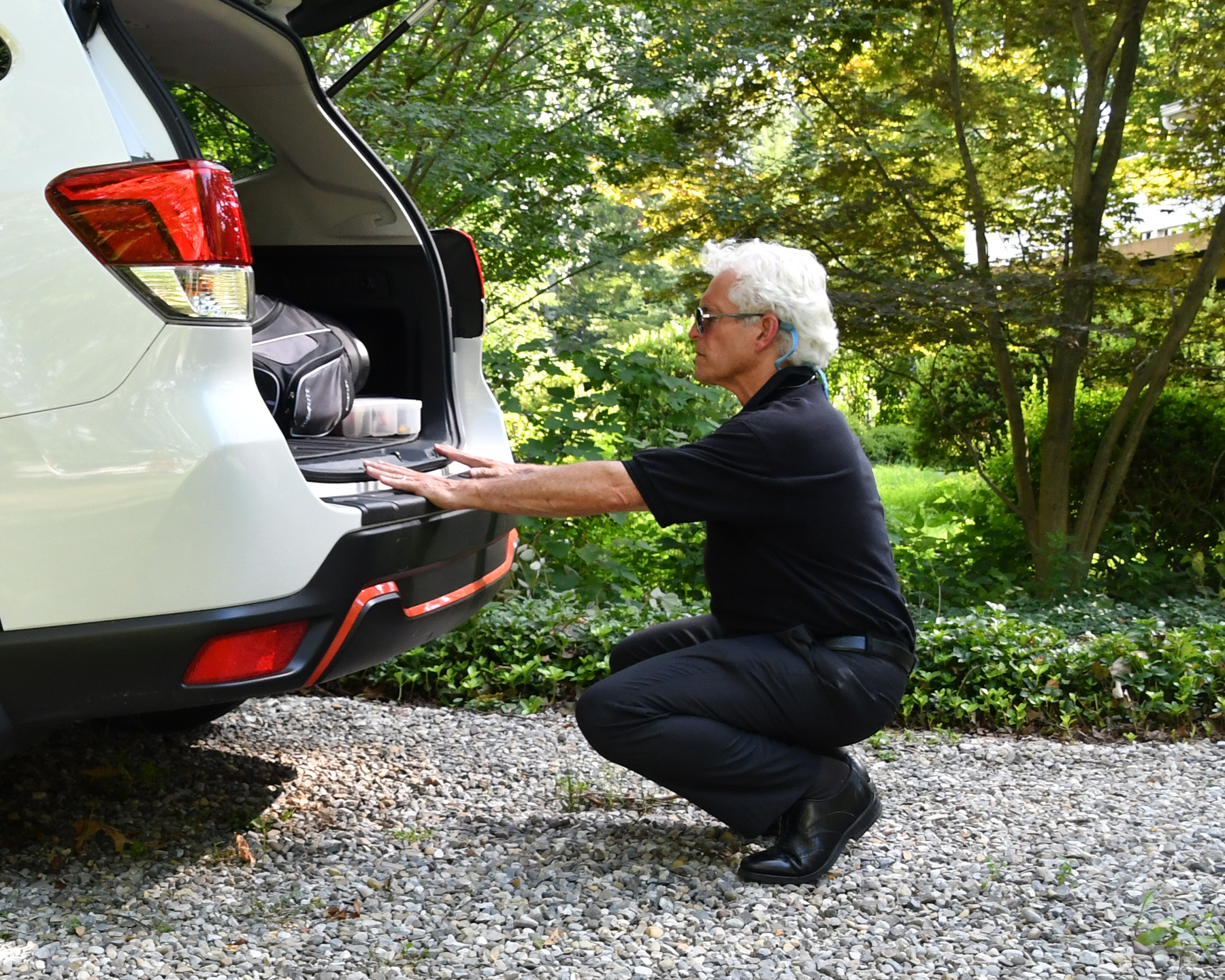
Deep Squat
- Deep inhalations and exhalations for 30 seconds. This stimulates your sympathetic nervous system and increases the oxygen supply which energizes the body.
- Shout!, just like the Eisley Brothers. Do it five or six times. It gives your system a jolt. Do this in conjunction with the deep breathing.
- Cold water splashed on your face and neck gives your bodya jolt. It’s just water even if you have a dress shirt on it will do no damage.
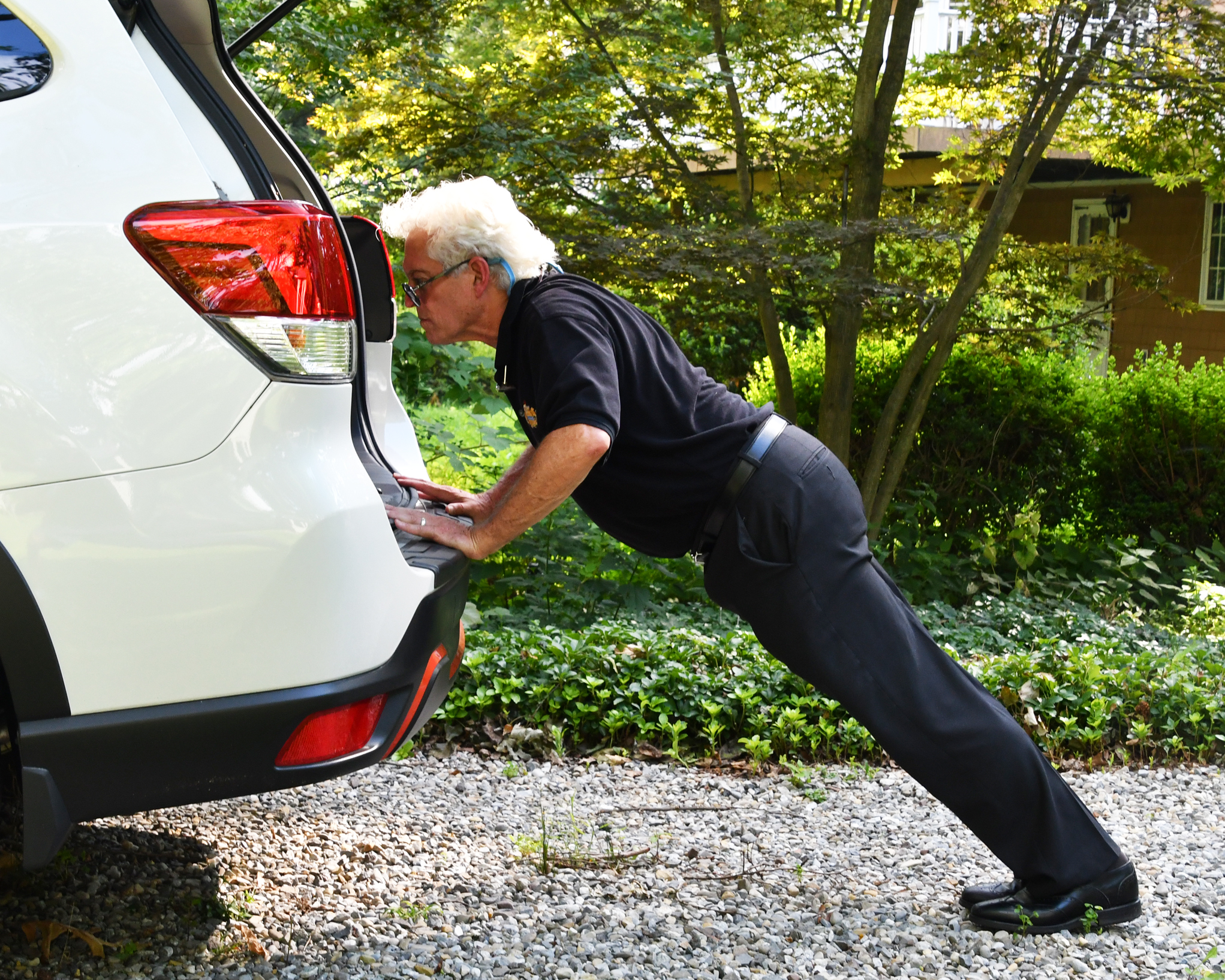
Push-up
- Dr. Berg’s 5 to keep you alive – Each activity employs large muscle systems such as the buttocks, thighs, quads and biceps to bring the heart rate up which increases blood flow and oxygen delivery.
The level of exertion should be in line with your level of fitness. Do each exercise for 30 seconds,
#1 Stair steps – In a stationary position bring your knee up to waist high alternating the left and right leg.

Running in place
#2 Squats – From a vertical position lower your body in a seated position to the bumper of the car. Then sit up. Repeat.
#3 Push-ups – With feet firmly shoulder length apart, place both hands on the hood, a fender or rear
bumper then raise and lower your body.
#4 Running in place
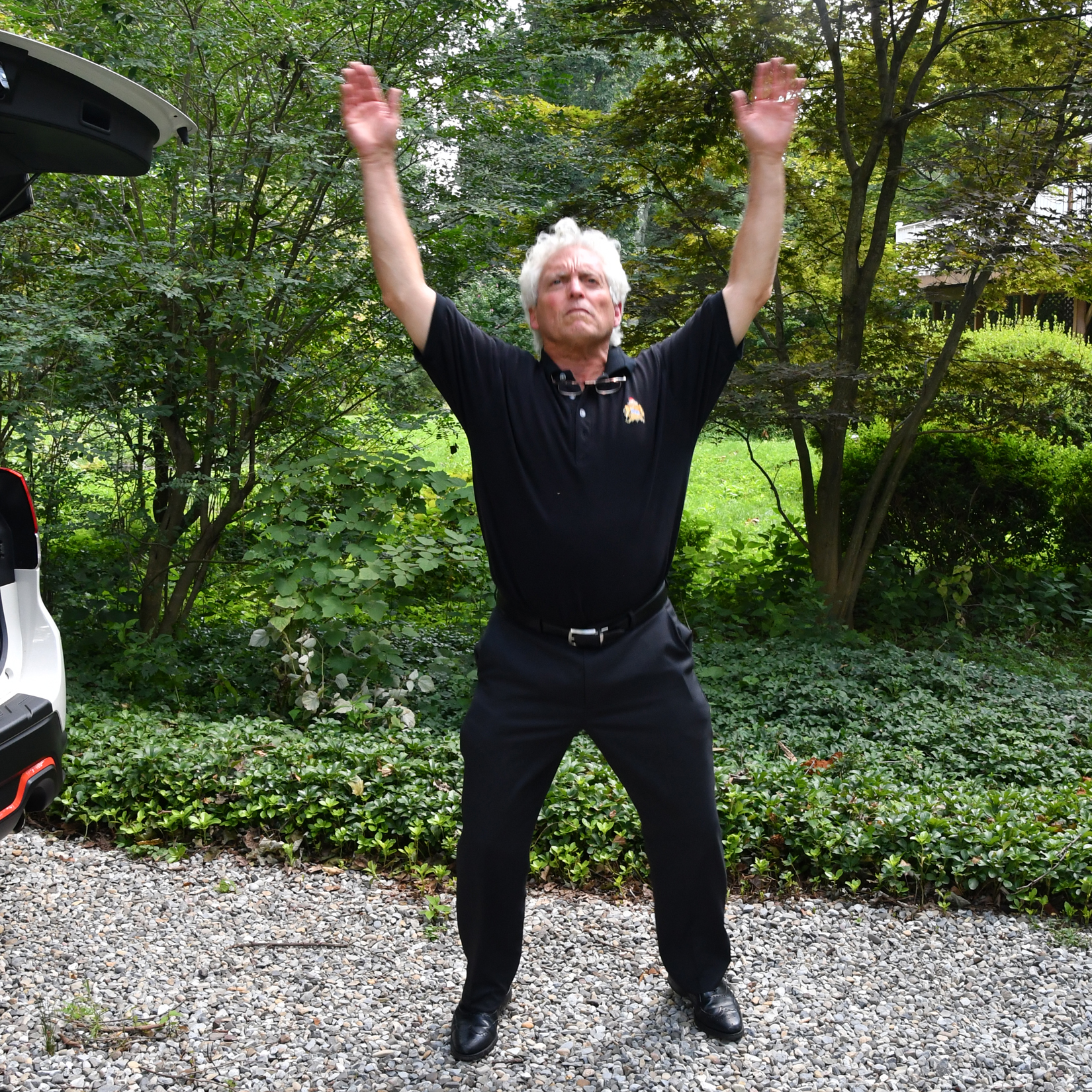
Jumping Jacks
#5 Jumping Jacks
The only thing better than knowing how to ward off drowsiness is not to experience it. Dr. Berg identifies driver seating posture and choice of snacks as two critical factors in defending against drowsiness. He calls driving with your seat reclined at a 45 degree angle, “horrific. In that position you have assumed a sleeping posture and sent a message to your brain to pull up the covers and turn out the lights.” He strongly recommends bringing the seat back up a few inches to what he calls “church pew” seating. This reinforces the need to maintain attention.

Rest Stop “less than ideal” menu
Many people consider car snacking an art. It should also be appreciated as a science, a nutritional science. “The last things you want to snack on during a long trip are carbohydrates especially sugar,” says Dr. Berg. Carbohydrates offer a short term boost followed by a punishing plunging crash. Protein foods are much better. Almonds and most nuts rank high as a driving snack as do vegetable and fruit slices. Chips, chocolate, pretzels, sugary beverages all put you on the fast lane to snoozeville.

Excellent Chuck!
Indeed, Dr. Berg is a very caring and skilled healer.
Great piece, Burt! All things for my brother Dave to consider on his NY- SC marathons!
Thank you. That is a ride I enjoy if I have time for the Blue Ridge. Route 95 not so much.
Hey there BH , A very well known fact not mentioned is removal of footwear while at the wheel. With millions of nerve endings that terminate at the feet, this measure provides extended stamina .
That is a great piece of information. I know sometime in the future yours truly will put that little gem to use.
As a person who drives for a living, this article is amazingly valuable!
Thank you Burt and thank you Dr. Berg! You’re both literally lifesavers!
Dr. Berg really offers some simple but potentially life saving techniques. Thank you for the feedback.